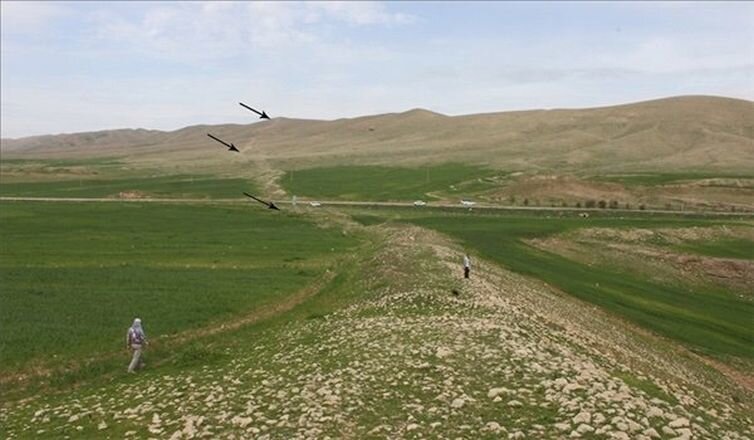Ancient Iranian wall among top 10 archaeology discoveries of 2019

TEHRAN – The discovery of a massive ancient wall in western Iran has been announced by Live Science as one of the top 10 biggest archaeology findings of 2019.
The wall stretching for about 71 miles (115 kilometers), running north-south between the Bamu Mountains in the north and an area near Zhaw Marg village in the south, took an estimated one million cubic meters [35,314,667 cubic feet] of stone to build.
While local people and a few archaeologists had known about the existence of the wall, it had never been described in a journal until this year when an article in the journal Antiquity, written by Sajjad Alibaigi, an assistant professor of Iranian archaeology at Razi University in Kermanshah, Iran, was released.
“Remnants of structures, now destroyed, are visible in places along the wall. These may have been associated turrets [small towers] or buildings,” Alibaigi wrote. He noted that the wall is made from “natural local materials, such as cobbles and boulders, with gypsum mortar surviving in places.”
It’s not clear when the wall was built, who built it or why. Pottery found beside the wall suggests that it was constructed between the fourth century B.C. and sixth century CE, Alibaigi wrote. The Parthians (who ruled between 247 BC and CE 224) and the Sassanians (224-651 CE) are two empires that flourished in the area, and either one of them could have built the wall.
The shortlist also includes 17 decapitated skeletons, their heads resting between their owner’s legs or feet, in a 1,700-year-old Roman cemetery in the village of Great Whelnetham in Suffolk, England; a 2,200-year-old grave containing the remains of a man who died in his 40s and who was buried with an intricate bronze shield, a chariot and two horses in a “leaping” pose, in the United Kingdom; and two infants, buried about 2,100 years ago at the site of Salango, on the coast of central Ecuador.
AFM/MG
Leave a Comment